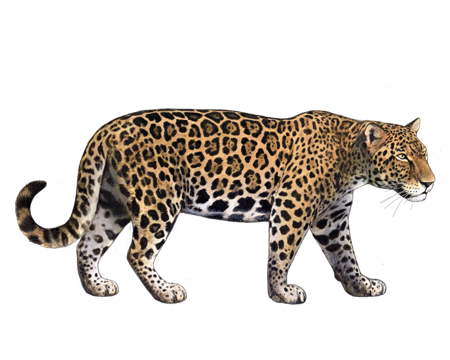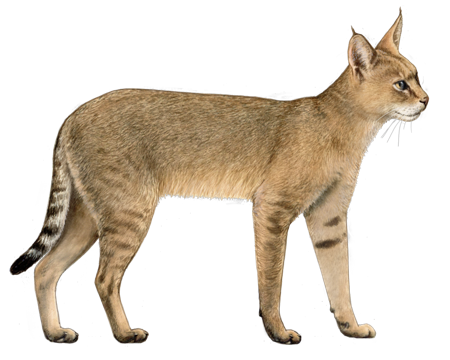
Serval
Servals are beautifully spotted cats with long bodies and oversized ears. Their exceptional sense of hearing and variety of hunting styles have made them the most successful feline predator.
Interested in discovering if your cat is a Serval?
Check out Wisdom Panel's DNA test.
Serval Traits
General Appearance
Servals are small, slender wild cats that can reach a maximum weight of 40 pounds.
Coat and Coloring
Nicknamed the "giraffe cat," the Serval's pale yellow coat displays a beautiful combination of black spots and stripes. They have white bellies and black ears with a distinctive white spot on the back.
Distinctive Physical Traits
Relative to their bodies, Servals have the biggest ears and longest legs of any cat. They also have small heads, elongated necks, long slender bodies, and short tails.
Serval Temperament
Servals are solitary animals. They interact with fellow Servals only when mating or when females are raising their kittens. But if kept as pets, they may form bonds with humans and be affectionate if handled appropriately from a young age. However, they are not likely to display the same level of comfort with strangers.
Servals use urine marking to identify their territory, and—even if litterbox trained— this is a habit not easily broken. Their vocalizations can include long yowls, shrill cries, purrs, and growls.
Like any wild cat, captive Servals require large, outdoor enclosures that allow them to roam freely. They can jump up to nine feet in the air and dig beneath fencing, so the enclosure should have both a top and sides that extend a few feet below ground.
Serval History
Servals originated in Africa, which remains their only natural habitat. Though they once roamed the continent at large, they now primarily live in the savannas of central and southern Africa. Servals thrive in grassy areas near streams and rivers—where they have ample opportunity to show off their keen hunting skills.
The Serval's name comes from the Portuguese word meaning "deerlike wolf." They appeared in ancient Egyptian art and were given as exotic gifts by Egyptian rulers. These wild cats were also the symbol on the Italian Tomasi family coat of arms in the 1800s. Despite being widely translated as "The Leopard," author Giuseppe Tomasi di Lampedusa's famous historical novel "Il Gattopardo"
Humans have long been fascinated by the prospect of keeping wild animals as pets. To create the "best of both worlds," breeder Suzi Wood began crossing Servals with Domestic cats in 1986. The resulting breed—the Savannah—has a spotted Serval appearance with a domestic cat's temperament.
In some places, people are allowed to own Servals. These cats may be many generations removed from African Servals but are still subject to restrictions regarding ownership of exotic animals.
Serval Care
Nutrition
Servals eat a varied diet of birds, rodents, insects, frogs, and reptiles.
Grooming
The Serval's short coat doesn't require a lot of grooming. If comfortable being handled, Servals should have their nails trimmed to protect others from swats and scratches.
Health
Servals need many of the same vaccinations and preventive care as domestic cats. However, they require a veterinarian trained and licensed in exotic animal care.
Breed Group
Wild cat
The breeds and populations in this group are, as the name would imply, still considered wild and undomesticated. The Wild Cat Group incorporates the widest range of body sizes and natural habitats of all the breed groups.
Resources
https://bigcatrescue.org/serval-facts/
https://animals.sandiegozoo.org/animals/serval
https://animaldiversity.org/accounts/Leptailurus_serval/
https://www.catsforafrica.co.za/serval-leptailurus-serval/
https://www.thesprucepets.com/serval-cats-1238152
https://aaric.org/2018/08/15/serval/
Reviewed February 23, 2021 by Laura Inman, DVM


















